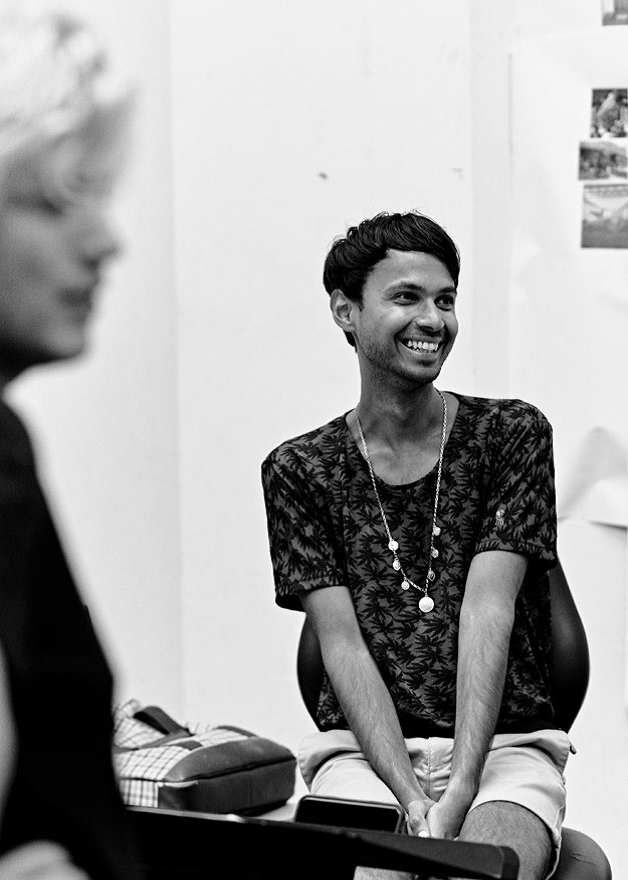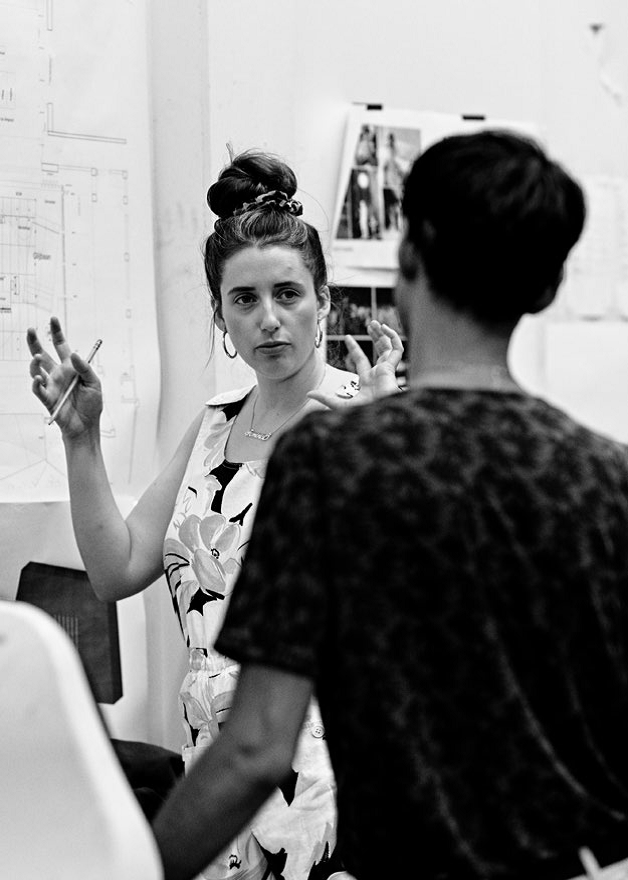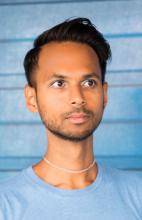‘Our work revolves around multiple authorship and polyphony’


Manoj Kamps and Lisenka Heijboer Castañón about their working method.
Opera-makers Manoj Kamps and Lisenka Heijboer Castañón on creating
opera as a collective.
Lisenka: “The rapid creative process of FAUST [working title] last season, made it possible for me to work very intuitively with the team. This resulted in a way of working that I’d always wanted to explore. We were suddenly given the big stage, which meant we had to find the essence very quickly: why are we doing this, what possibilities does this big stage open up for us? Finding a way for a multitude of voices to help determine the content felt imperative at that moment.”
Manoj: “During the creative process, we delved deeper into our outlook on the world, our outlook on the art form opera and on making theatre, and into what we think needs to be told. Looking back, we started developing a sort of artist statement together. A statement we’d never put down in writing—it isn’t a dogma and it’s constantly in flux—but that defines how we want to work and create together. FAUST [working title] was the first time we applied this. Now we can continue developing it with the same people as well as with newcomers to the team—with a bit more time and hopefully less limitations.”
Lisenka: “Our work revolves around multiple authorship, it’s always written by a multitude of voices. To be honest, this kind of teamwork in opera isn’t that unique or new. But since there’s often just one name on the score, we tend to forget that. The singer who performed a particular role first undoubtedly made a huge contribution to how the piece has developed. We specifically mention this now because it’s important to us—and fun—to work so comprehensively with more people.”
Manoj: “Everyone in the team has a varied, interdisciplinary practice. All of us shift between institutions and more independent organisations, developing concepts for existing repertoire as well as creating new work. Everything we do is based on both knowledge of traditional repertoire and the immense world that exists next to and around it. We’re in a constant dance, so to speak, with different ways of approaching art.”

